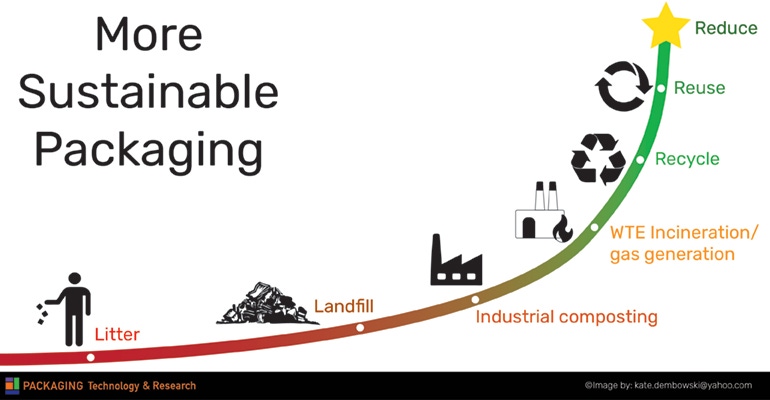6 Packaging Reductions That Don’t Increase Food Waste
Three lightweighting techniques and three redesign innovations that reduce the amount of food packaging without a downside.
February 10, 2023
Packaging reductions that do not create additional food waste equals more environmentally friendly food packaging. The desire to reduce packaging remains strong, and three motivating factors can prompt the packaging industry to take additional action for sustainability.
Laws: Legislation such as the Packaging and Packaging Waste Directive, which goes into effect in 2024, sets waste reduction targets of 5% to 15% by 2040. According to Article 9, packaging must be "scaled down" to the bare minimum required to ensure the product's functionality and safety. In addition, more brands will be more inclined to focus on reduction as more states and countries adopt Extended Producer Responsibility (EPR) because they will be required to share the cost of packaging disposal.
Planet: Calvin Lahkan says it best "It's important to remember that Reduce, Reuse, Recycle is not just a catchy phrase, but the order in which we are supposed to do things."
Money: Higher packaging materials prices, climate-related disasters, and factory slowdowns are prompting brands to stretch packaging materials further.
Part of the reduction process is rethinking the purpose of packaging. This is critical because both consumers and the supply chain have changed dramatically, and new product launch timelines are frequently too short to allow for optimization. Packaging is being reduced once more through light-weighting and redesign.
Three packaging lightweighting examples.
Corrugated boxes have led the way in terms of source reductions of materials. Now corrugated box manufacturers are replacing a ply of 35-pound paper with a 26-pound paper ply.
PET bottle lightweighting focuses on increasing crystallinity by fine-tuning processing speeds, temperatures, extension ratios, molecular weight, molecular weight distribution, and other processing changes. Amcor's Quantum technology reduces the finish area — which must be strong enough to withstand the high seal torques — resulting in 13% less PET in a 12-ounce bottle. Structural additives are also used to light-weight packaging. For example, adding starch into pouches reduces the amount of packaging by 25%, and a paper bottle supports a thin bio-based polyethylene furanoate (PEF) liner as with Carlsberg.
Film density decreases by 35% when a more advanced cavitation agent creates void spaces within polyethylene film. Void Technologie’s 0.1-10 micrometer-sized air voids diffract light, producing an opaque film that reduces light-induced oxidation. In addition, the technology allows for quick sink/float separation, which is used in recycling sorting.
Three packaging redesign examples.
Right-sizing corrugated cases for ecommerce can reduce dimensional weight (the ratio of shipping box size to total package weight), resulting in fewer trucks on the road, lower fuel use and emissions, and lower transit costs. High-speed cameras and artificial intelligence are used by systems such as Ranpak's EVO! Cut-it to create 15 customized boxes per minute, ensuring each case is the correct size.
Replacement as a tactic is exemplified by RapidRoperPlus, which replaces thick pallet corner posts with two layers of prestretched film reinforced with laminated filaments under tension. The materials tolerated sudden shifts and continuous vibration while maintaining load stability. This is a significant material reduction while improving product protection.
Removing a packaging component results in significant packaging reduction. For example, etching or engraving on glass and plastic bottles allow labels to be removed. For example, Tonejet's Cyclone C4+ replaces the pressure-sensitive labels and shrink sleeves traditional in microbreweries' short-run beers.
Packaging optimization to reduce packaging is most effective by conducting yearly reviews.
Insights of Calvin Lahkan, Myles Cohen, Rob Kaszubowski, and Bob Kayser are appreciated.
Claire Sand has 30+ years of experience in industry and academia. She’s owner of Packaging Technology and Research and Gazelle Mobile Packaging and an Adjunct Professor, CalPoly, Michigan State University, and the University of Minnesota. You can reach her at www.packagingtechnologyandresearch.com or [email protected].
About the Author(s)
You May Also Like





